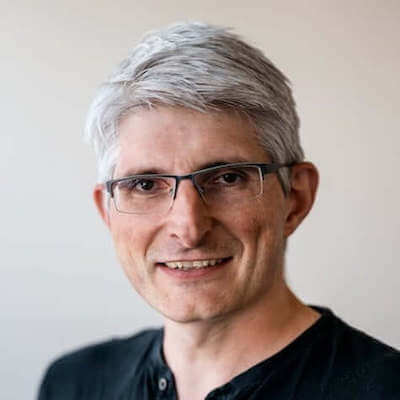We need biology in the fight against climate change.
We need biology in the fight against climate change... but are we ready to use It?
What good is a paper straw when the world is on fire?
We’re surrounded by opinions and advice imploring us to take the burden on ourselves to fix the world.
Refusing plastic straws, turning lights off, flushing less water, and giving money to plant trees. Noble actions all, but it feels like we’re trying to stop a tsunami with a water pistol.
While we mean well, the mercury carries on rising towards the point of no return. The enormity of the challenge paralyzes and terrifies us, but we have to wean ourselves off these comforting gestures.
We can’t rely on individuals, business leaders, or even governments to make enough change to stave off disaster. The sort of climate change events that would force urgency on these groups will materialize long after too much CO2 has been unleashed.
The surest bet we have lies in fundamental, transformative technological solutions.
For many, this means things like wind farms, solar panels, electric cars, nuclear fission and—someday—fusion. But the sleeping giant in the corner of this particular room is one of the most powerful phenomena we know of.
It can bridge the nano to the macro, spin great trees out of gas and light, and effortlessly orchestrate flows of energy and matter into the wondrous array of life that we see on our blue planet.
With its help, we could turn things around.
This sleeping giant is biology.
Problem 1: We haven’t figured out a good way to store energy.
Climate change is all about energy. And renewable energy needs effective storage.
For biology, this is routine: it can cram energy down into hugely dense packets of carbon-carbon bonds without breaking a sweat.
While renewable energy generation advances in leaps and bounds, the best places for making that energy often aren’t in the same places where people need that energy.
There’s a lot of sun in the middle of the desert, but not many cities full of people.
Now imagine a world where renewable electricity is pumped into biological systems that package energy into hydrocarbons that can be shipped anywhere in the world. Compact and made without emissions, they would be ready for use in any high energy process that needs them.
We might perhaps picture teeming forests supplying all the jet fuel we could possibly need, or a living, floating island that helps heat homes on the other side of the planet.
Problem 2: We’re using too much energy in the first place.
The human use a lot of energy. In contrast, biology is incredibly efficient.
Producing meat is incredibly energy-intensive, but cultured meat or meat substitutes could help. 14.5% of global greenhouse gas emissions can be traced to the livestock industry, the second-largest contribution to human-induced emissions next to the burning of fossil fuels.
Companies like HigherSteaks, who is on a mission to reduce traditional meat consumption and greenhouse gas emissions, are proving that lab grown meat doesn't have to be astronomically expensive. Using DOE for media optimization, they're working to bring a wider variety of cultured pork products to everyone’s homes, and in turn reduce greenhouse gas emissions and improve animal welfare worldwide.
Making nitrogen fertilizer is guilty of the same energy intensity, but engineering crops that could fix their own nitrogen would be transformative. And how about engineering plants to be better at photosynthesis while we’re at it?
Plants have been evolving for eons and photosynthesis for even longer than that. But it hasn’t been evolving in the conditions that we can provide plants with now. In one piece of engineering, biologists have already increased photosynthetic efficacy by 40%. This would pave the way to more efficient crop production, but it would also fix atmospheric CO2 in the process.
This brings us to maybe the most important way that biology could combat climate change...
Fixing climate change is largely a question of fixing carbon.
We’ve been spending carbon to buy energy, and now we use energy to yank it back out of the atmosphere.
Biology has been doing this for 3.4 billion years and is an obvious candidate for rolling back our gaseous vandalism of the last 200 years.
How would we do this at scale?
This could be enormous seas of algae, dense plantations that convert sunlight and CO2 into useable carbon-based products, or bioprocesses that produce bricks with the strength of seashells, locking carbon into our buildings in the form of calcium carbonate.
All these problems are solvable, just out of reach... or are they?
If some of the solutions that biology could offer seem fanciful, it’s not because biology lacks the capacity to make them happen. Far from it.
The real problem lies in our inability to understand biology well enough to engineer the solutions we need.
We live in a time before the age of true biological mastery. When our species reaches that threshold, though, all the advances we have so far made will be “the early days”.
There’s huge potential for improvement in the way we carry out biological experiments. Biology seems infinitely complex, but our experiments are usually planned in word documents, carried out with hand-held pipettes, and analyzed afterward in spreadsheets.
These are twentieth-century ways of tackling twenty-first-century problems. The gap between the challenge of engineering biology and the tools we use is huge, but we can cross this gap.
Cloud-based computing, AI, and automation are routine in other industries, and now taking hold in life sciences. They have the most to offer when it comes to the intricacies of biology: powerful experiments run with the aid of automation can produce the datasets that scientists will use to gain unimaginable insight.
As we bring AI into the mix, the power of human ingenuity will be unleashed to engineer a myriad of biological solutions. We’ll fix carbon, make more with less, and combine all of this with renewable energy sources to make sure we can support our global population without destroying the natural world.
There’s a long way to go yet. But with the help of biology, we have the potential to go the distance and live to see an incredible future unfold before us.
Markus Gershater, PhD
Markus is a co-founder of Synthace and one of the UK’s leading visionaries for how we, as a society, can do better biology. Originally establishing Synthace as a synthetic biology company, he was struck with the conviction that so much potential progress is held back by tedious, one-dimensional, error-prone, manual...


